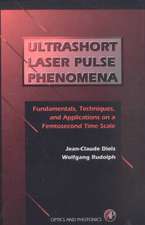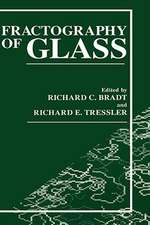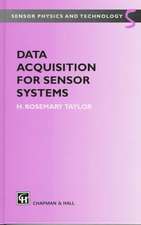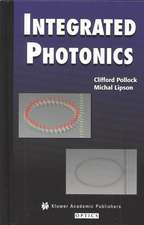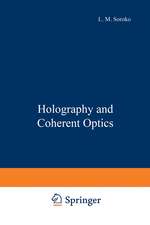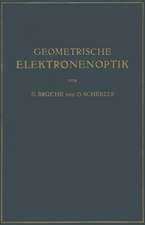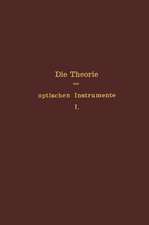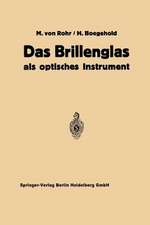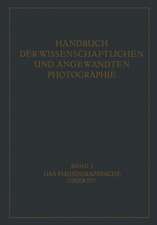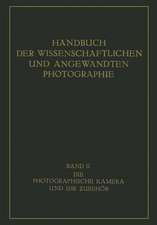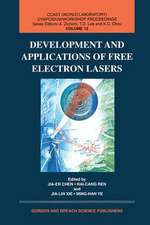Statistical Methods in Sonar: Reihe Wissenschaft
Autor V. V. Ol shevskiien Limba Engleză Paperback – 26 iul 2012
Din seria Reihe Wissenschaft
-
 Preț: 417.52 lei
Preț: 417.52 lei - 15%
 Preț: 490.42 lei
Preț: 490.42 lei -
 Preț: 480.62 lei
Preț: 480.62 lei -
 Preț: 479.85 lei
Preț: 479.85 lei -
 Preț: 411.32 lei
Preț: 411.32 lei -
 Preț: 476.79 lei
Preț: 476.79 lei -
 Preț: 479.29 lei
Preț: 479.29 lei - 15%
 Preț: 461.87 lei
Preț: 461.87 lei - 5%
 Preț: 455.69 lei
Preț: 455.69 lei - 5%
 Preț: 453.47 lei
Preț: 453.47 lei -
 Preț: 476.79 lei
Preț: 476.79 lei -
 Preț: 476.42 lei
Preț: 476.42 lei -
 Preț: 480.24 lei
Preț: 480.24 lei - 15%
 Preț: 434.79 lei
Preț: 434.79 lei - 15%
 Preț: 491.11 lei
Preț: 491.11 lei -
 Preț: 412.13 lei
Preț: 412.13 lei -
 Preț: 415.77 lei
Preț: 415.77 lei -
 Preț: 416.34 lei
Preț: 416.34 lei -
 Preț: 413.45 lei
Preț: 413.45 lei - 15%
 Preț: 494.68 lei
Preț: 494.68 lei - 5%
 Preț: 568.07 lei
Preț: 568.07 lei -
 Preț: 413.45 lei
Preț: 413.45 lei -
 Preț: 411.75 lei
Preț: 411.75 lei -
 Preț: 410.55 lei
Preț: 410.55 lei - 5%
 Preț: 405.75 lei
Preț: 405.75 lei -
 Preț: 412.68 lei
Preț: 412.68 lei -
 Preț: 409.63 lei
Preț: 409.63 lei -
 Preț: 412.68 lei
Preț: 412.68 lei -
 Preț: 413.45 lei
Preț: 413.45 lei - 5%
 Preț: 389.32 lei
Preț: 389.32 lei -
 Preț: 412.30 lei
Preț: 412.30 lei -
 Preț: 416.34 lei
Preț: 416.34 lei - 15%
 Preț: 467.46 lei
Preț: 467.46 lei
Preț: 385.62 lei
Nou
Puncte Express: 578
Preț estimativ în valută:
73.81€ • 80.20$ • 62.04£
73.81€ • 80.20$ • 62.04£
Carte tipărită la comandă
Livrare economică 21 aprilie-05 mai
Preluare comenzi: 021 569.72.76
Specificații
ISBN-13: 9781475704761
ISBN-10: 1475704763
Pagini: 264
Ilustrații: XX, 242 p.
Dimensiuni: 152 x 229 x 14 mm
Greutate: 0.36 kg
Ediția:Softcover reprint of the original 1st ed. 1978
Editura: Springer Us
Colecția Springer
Seria Reihe Wissenschaft
Locul publicării:New York, NY, United States
ISBN-10: 1475704763
Pagini: 264
Ilustrații: XX, 242 p.
Dimensiuni: 152 x 229 x 14 mm
Greutate: 0.36 kg
Ediția:Softcover reprint of the original 1st ed. 1978
Editura: Springer Us
Colecția Springer
Seria Reihe Wissenschaft
Locul publicării:New York, NY, United States
Public țintă
ResearchCuprins
I. Introductory Remarks.- §1. Some Definitions.- §2. The Sonar Model.- §3. Sonar and Radar.- §4. Statistical Problems of Sonar.- II. Procedural Fundamentals of Experimental Research in Sonar.- §5. Principal Tasks of Experimental Research.- §6. The Structural Diagram of Quantitative Experimental Research.- §7. Discrimination Functional of the Probability Characteristic and Its Statistical Estimate.- §8. The Base Model.- §9. Interpretation of Experimental Results.- §10. Objects of Experimental Research in Sonar.- III. Probability Models of Hydroacoustic Signals.- §11. Varieties of Models.- §12. A Priori Information and Probability Models.- §13. Methods for Describing Hydroacoustic Signals in Terms of Probability.- §14. Classification of Hydroacoustic Signals.- §15. Canonical Models.- §16. Parametrical Models.- §17. Additive-Multiplicative Constructive Models.- §18. Models in the Form of Oscillations with Random Amplitude and Phase.- §19. Complex Representation of Signals.- IV. The Emitted Signals.- §20. Signal Classification.- §21. Complex Representation of Emitted Signals.- §22. Ambiguity Function and Diagrams.- §23. Signals with Sinusoidal Occupation.- §24. Frequency-Modulating Signals.- §25. Noiselike Signals.- V. Echo Signals.- §26. Classification of Objects of Research and the Conditions under Which They Are Observed.- §27. Representation of Echo Signals and Their Probability Characteristics.- §28. The Model of an Echo Signal of Known Form with Constant Lag and Change in Time Scale.- §29. Echo Signal with Fluctuating Amplitude.- §30. Echo Signal Consisting of an Additive Mixture of a Signal of Known Form and a Random Component.- §31. Echo Signal with Random Amplitude Modulation.- §32. Echo Signal with Random Phase Modulation.- §33.Echo Signal with Random Frequency Modulation.- §34. Model of an Echo Signal in the Form of a Sum of Elementary Signals.- VI. Marine Reverberation.- §35. Classification of Reverberatory Signals.- §36. Discrete Canonical Model of Reverberation.- §37. Complex Representations.- §38. Characteristics of the Random Parameters of Elementary Scattered Signals.- §39. Average Value of Reverberation.- §40. Autocorrelation Function for the Complex Envelope of Reverberation.- §41. Energy Spectrum of the Complex Envelope of Reverberation.- §42. Evaluation of the Frequency-Time Cross-Correlation Function for the Complex Envelopes of the Emitted Signal and Reverberation.- §43. Generalization for the Case of Elementary Scattered Signals of Different Forms.- §44. Space-Time Correlation of Reverberation when Wideband Signals Are Emitted.- §45. One-Dimensional Semi-invariants.- §46. Probability Distributions for Instantaneous Values of Reverberation and Its Envelope.- VII. Problems of Detecting Echo Signals in the Presence of Interference.- §47. Specific Features of Detecting Echo Signals in Sonar.- §48. Probability Characteristics of Detection.- §49. Typical Probability Distributions of the Output Effect.- §50. Incoherent Detection of Simple Echo Signals with a Linear Detector.- §51. Incoherent Detection of a Noiselike Echo Signal with Quadratic Detection and Smoothing (“Energy Detection”).- §52. Coherent Detection of a Noiselike Echo Signal Using Cross-Correlation Processing.- §53. The Effect of Reverberation Interference on Echo Signal Detection.- §54. Detection with Multichannel Systems, and Discussion of Results.- VIII. Elements of the Theory of Statistical Measurement.- §55. Basic Stages of Statistical Measurements.- §56. Statistical Measurement Errors.-§57. Formation of a Statistical Estimate.- §58. Statistical Measurement Errors of the Characteristics of Nonstationary Homogeneous Random Processes.- §59. Optimization of the Parameters of the Statistical Measuring System.- §60. Adaptive Optimization.- IX. Inverse Probability Problems in Sonar.- §61. Direct and Inverse Problems.- §62. Correctness Conditions.- §63. Determination of the Probability Density for the Rates of Movement of Scatterers.- §64. Determination of the Spectrum of the Fluctuations in the Rate of Movement of Scatterers.- §65. Determination of the Relative Level of Coherent Scattering.- §66. Determination of the Average Number of Scatterers.- §67. Determination of the Frequency Properties of Scatterers.- §68. Determination of the Spatial Distribution of Scatterers.- Conclusion.

